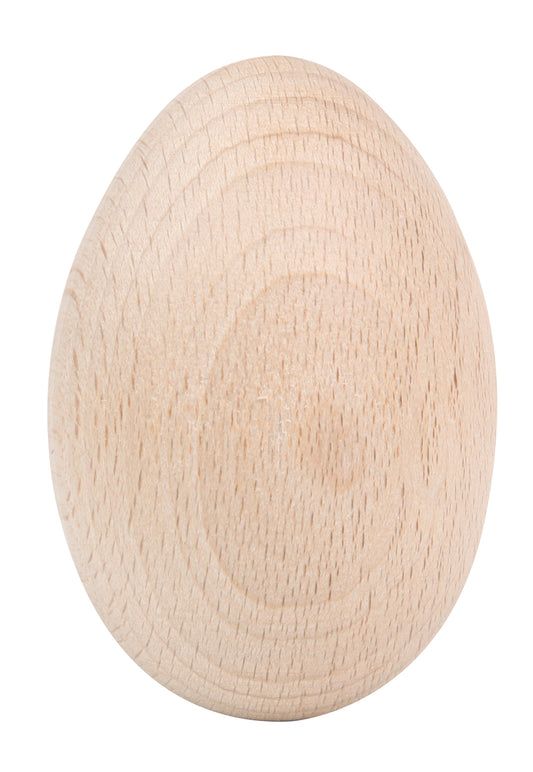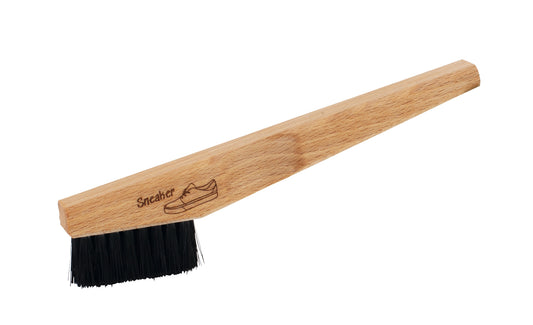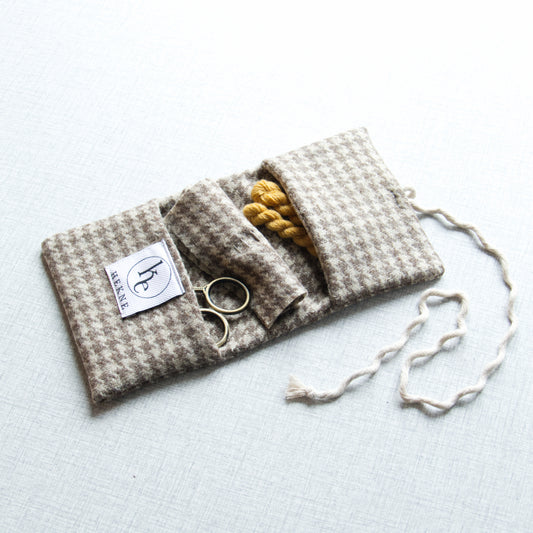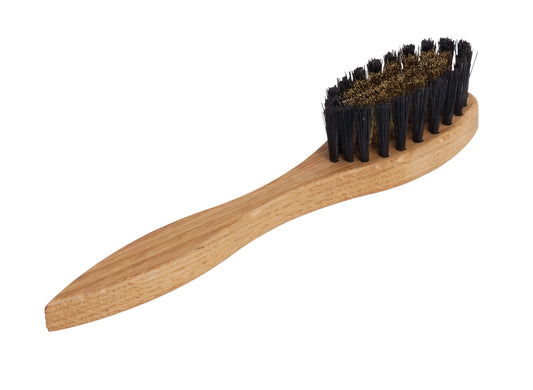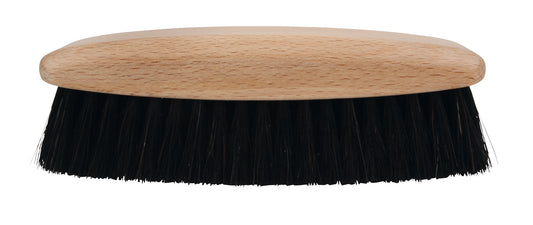Patch
 If you have a large hole or want the repair to have stretch, you can choose to knit a patch directly onto the knitwear.
If you have a large hole or want the repair to have stretch, you can choose to knit a patch directly onto the knitwear.
How to patch a knitted garment:
Choose a horizontal row below the damaged area where you want the patch to start. The patch should cover the entire damage and any wear around it, plus a little extra. It's better to make the patch too big than too small, to make sure the garment doesn't fray on the outside of the patch afterwards.
Pick up the right "arm" of each stitch or "V" in the row you have chosen. Knit back and forth (regular or rib, depending on the garment). Starting with row number two, the last stitch of each row should be knitted together with a stitch in the garment. Do this by picking up the small vertical thread that you find between the two "arms" of the stitch or "V" on the outside of where your patch should end and knit it together with the last stitch on your needle. This way, the patch will be knitted together with the garment on each side; every other row on the right side and every other row on the left side.
Continue knitting until your patch covers the damaged area plus a little more. Sew the top edge of the patch to the garment with a duplicate stitches: Cut the thread, but leave enough thread for the duplicate stitches. Thread a needle through the thread and bring it to the back of the garment at the corner of the patch. Make stitches by bringing the needle up to the bottom of a stitch or "V" in the garment and at the same time through the first stitch on the needle. Then take the first stitch off the needle. Follow the thread to the "V" behind the stitch above (in the garment). Bring the needle back through the bottom of the "V" where you started (the patch and garment together). Bring it up again to the bottom of the next stitch on the same horizontal row, continuing to attach the patch to the garment in this manner. Secure your thread after finishing the last duplicate stitch. Use the same thread or a new one to secure the edges around the hole with a few simple stitches so that it does not unravel.
Steam and iron gently to make the patch flat and nice.
Level: intermediate
Some more tips about patches:
You can also sew on a patch, for example made of felted wool (wash worn-out wool garments at 60 degrees). Felted wool does not fray and is perfect as a patch as you do not need to secure the edges.
When making or choosing patches, try to find a thickness that matches your garment. A patch that is thicker than the garment can feel bulky and uncomfortable.
Feel free to mix materials, but be aware of the necessary stretch. Also make sure it can be washed at the same temperature as the garment itself!
There are also patches that can be glued or ironed on, e.g. for waterproof materials. Remember to cut rounded corners, so they last longer.
More instructions
Mend knitted garments
Other repairs
Clothing care products
-
Red cedar wood oil
Regular price 119,00 NOKRegular priceUnit price / per -
Brush cleaner for Velcro, clothes brushes and hair brushes
Regular price 49,00 NOKRegular priceUnit price / per -
Red cedar wood balls
Regular price 69,00 NOKRegular priceUnit price / per -
Wool detergent - lavender and cedar
Regular price 229,00 NOKRegular priceUnit price / per -
Clothes brush with bronze for coarse textiles
Regular price 479,00 NOKRegular priceUnit price / per -
Cedar wood rings
Regular price 99,00 NOKRegular priceUnit price / per -
Clothes brush for delicate fabrics
Regular price 479,00 NOKRegular priceUnit price / per -
Darning egg in untreated wood
Regular price 49,00 NOKRegular priceUnit price / per -
Shoe brush for sneakers
Regular price 109,00 NOKRegular priceUnit price / per -
Red cedar blocks
Regular price 99,00 NOKRegular priceUnit price / per -
 Sold out
Sold outCARING KIT take care of your clothes
Regular price 995,00 NOKRegular priceUnit price / per -
Pocket clothes brush for all fabrics
Regular price 99,00 NOKRegular priceUnit price / per -
 Sold out
Sold outReusable cotton shoe bag
Regular price 69,00 NOKRegular priceUnit price / per -
Shoe brush with stiff natural bristles for cleaning
Regular price 99,00 NOKRegular priceUnit price / per -
Wool lint comb
Regular price 99,00 NOKRegular priceUnit price / per -
Laudry brush for stain removal
Regular price 399,00 NOKRegular priceUnit price / per -
Lemon soap stick for stain removal
Regular price 119,00 NOKRegular priceUnit price / per -
Handmade stuffed mushroom
Regular price 399,00 NOKRegular priceUnit price / per -
UPCYCLED repair kit with sewing supplies
Regular price 549,00 NOKRegular priceUnit price / per -
Shoe polish cloth
Regular price 39,00 NOKRegular priceUnit price / per -
Shoe brush for suede
Regular price 99,00 NOKRegular priceUnit price / per -
Lemon soap foam for delicate fabrics
Regular price 229,00 NOKRegular priceUnit price / per -
Shoe brush
Regular price 249,00 NOKRegular priceUnit price / per -
Shoe polish application brush
Regular price 99,00 NOKRegular priceUnit price / per -
Red cedar hook up
Regular price 99,00 NOKRegular priceUnit price / per








